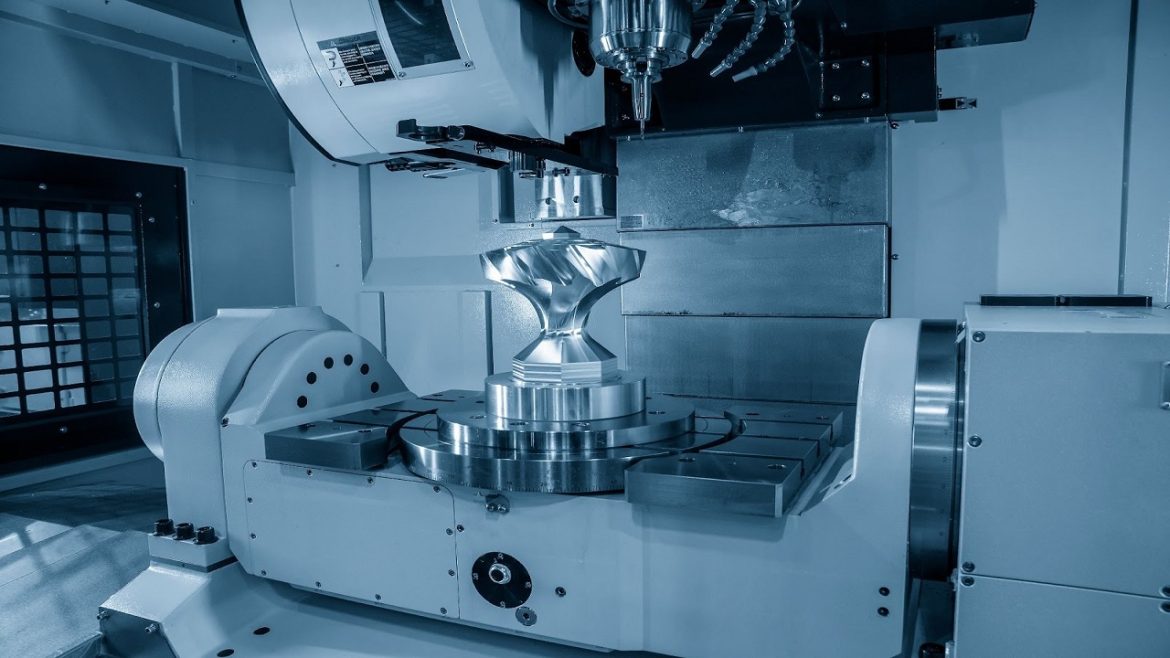In the realm of precision manufacturing, 5-axis CNC machining stands as a testament to the remarkable advancements in technology and its potential to transform industries. The term milling prototype encapsulates the essence of this cutting-edge technology, where precision and complexity converge to create components that were once considered unattainable. This article delves into the world of 5-axis CNC machining, unveiling its precision capabilities, applications, and the profound impact it has across various industries.
Unveiling the Art of 5-Axis CNC Machining
CNC machining, a subtractive manufacturing process, utilizes computer-controlled machinery to sculpt raw materials into highly accurate components. The “”5-axis”” designation signifies the machine’s capacity to maneuver the cutting tool in five distinct directions simultaneously, offering an unparalleled level of versatility and precision.
In the conventional 3-axis machining process, the cutting tool moves along the X, Y, and Z axes, limiting its ability to fabricate intricate and complex geometries. However, 5-axis CNC machining transcends these constraints by introducing two additional axes, typically denoted as A and B, which enable the tool to pivot and rotate while simultaneously moving along the standard X, Y, and Z directions. This multi-dimensional freedom empowers manufacturers to craft intricate parts with a single setup, ultimately reducing production time and enhancing precision.
The Precision Marvel of 5-Axis CNC Machining
Exquisite Surface Finishes
A standout feature of 5-axis CNC machining is its capability to achieve impeccable surface finishes. The continuous movement of the tool along multiple axes results in smooth, precise contours, delivering components with superior surface quality.
Mastering Complex Geometry
Components characterized by intricate shapes and numerous features often necessitate multiple setups in 3-axis machining, introducing the risk of alignment errors. In contrast, 5-axis machining seamlessly produces such parts in a single setup, ensuring precise alignment and consistency.
Stringent Tolerances
The precision of 5-axis CNC machining is demonstrated in its ability to achieve tight tolerances, frequently reaching as low as ±0.0005mm. Such microscopic precision is indispensable in industries like aerospace, automotive, and medicine, where even the slightest deviations can have critical implications.
Setup Time Reduction
Traditional machining methods demand multiple setups, tool changes, and repositioning, all of which consume valuable time. 5-axis machining significantly reduces setup times, enhancing efficiency and cost-effectiveness.
Applications Across Diverse Industries
The versatility and precision of 5-axis CNC machining render it indispensable across a spectrum of industries:
Aerospace
In aerospace, where the emphasis is on lightweight yet robust components, 5-axis machining is employed to fabricate intricate parts like turbine blades, engine components, and aircraft structures with precision and efficiency.
Automotive
The automotive industry relies on 5-axis machining for manufacturing complex components such as transmission parts, engine blocks, and suspension systems. This precision technology ensures optimal performance and safety.
Medical
Medical devices and implants demand the highest precision and biocompatibility. 5-axis machining enables the creation of intricate medical components with tight tolerances, a crucial aspect of patient well-being.
Optics
The world of optics and lens manufacturing benefits immensely from 5-axis machining, enabling the production of aspheric lenses and complex optical components with superior surface quality.
Robotics
The precision required in robotic systems is achieved through 5-axis machining, facilitating the creation of intricate joints, gears, and components vital for the seamless movement of robots.
Conclusion
The advent of 5-axis CNC machining has heralded a precision revolution in manufacturing. Its capacity to handle complex geometries, meet stringent tolerances, and reduce setup times has positioned it as a cornerstone of industries that demand ultimate precision. As we continue to explore the limitless capabilities of this technology, we can anticipate further innovation and groundbreaking applications. “”Milling prototype”” is no longer a concept; it is a testament to the boundless possibilities that precision machining affords us in the modern era.
